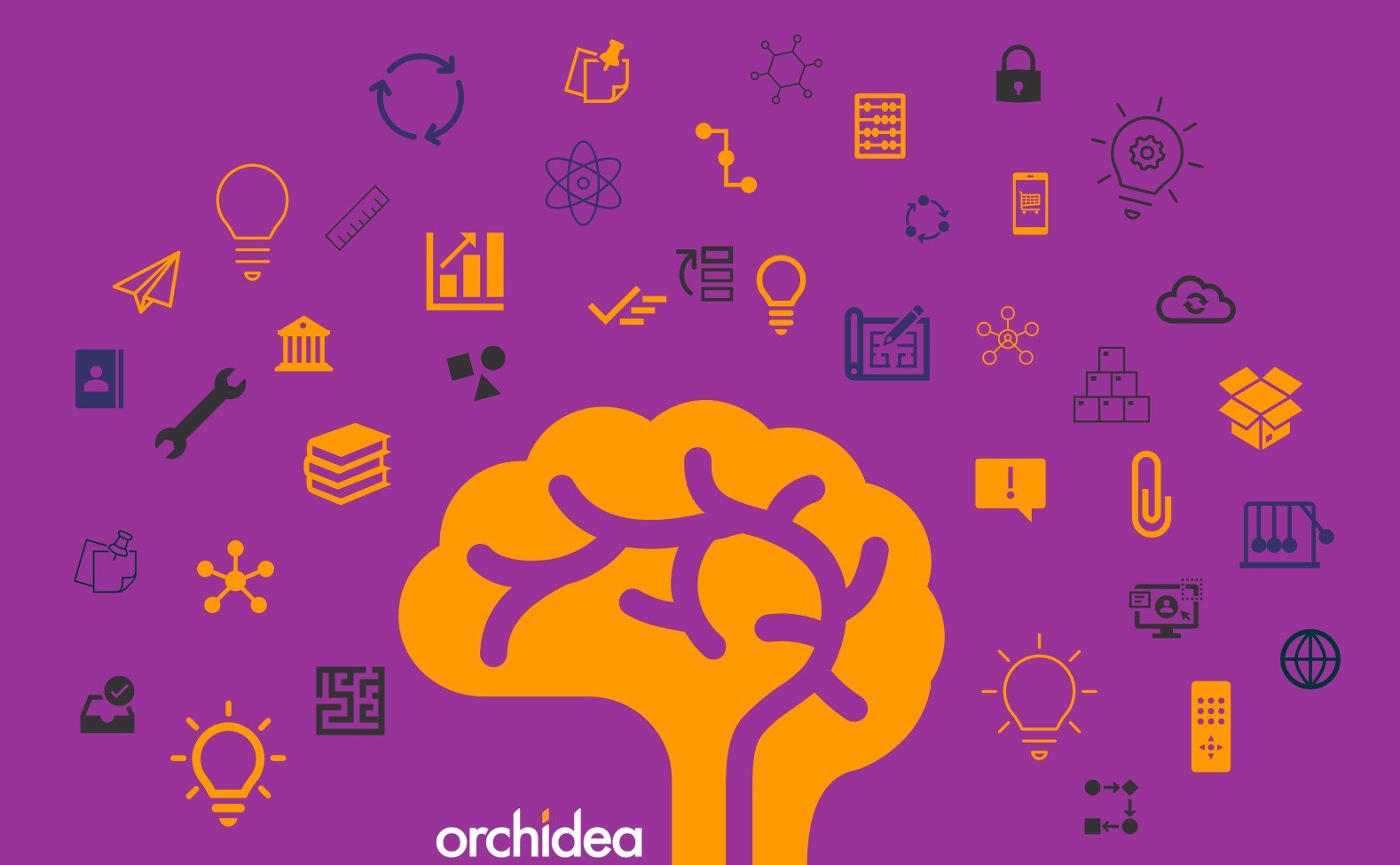No matter the size or sector of your organization, you have most likely engaged in some type of brainstorming session. We are living in an increasingly competitive world, where small startups and huge corporations are looking for more market share.
Even if you are satisfied with your organization's status today, there is no guarantee that you will achieve similar (or even greater) success in the future. That’s why you should learn how to brainstorm effectively to boost your creativity and get new ideas for your business.
Brainstorming sessions can increase your odds of achieving your business goals. From improving a product or service to drastically changing part of your internal operations, brainstorming sessions can help you consider off-the-wall ideas. While some of these ideas may fall flat, others may change the course of your organization.

The benefits of brainstorming sessions are certainly there. That being said, actually preparing for and conducting an effective brainstorming session is an entirely different matter. It isn’t just about sitting in a circle and spouting off random ideas that emerge in your head. Rather, it is a more organized and directed way of generating new ideas.
In this post, we will answer the question: How to conduct a brainstorming session? By studying how to prepare for and facilitate effective brainstorming sessions, you can get the most out of this extremely useful innovation tool.
Preparing For A Brainstorming Session
When you are preparing for your brainstorming session, there are several important things to keep in mind. Granted, this isn’t an exclusive list, but these steps are critical in the moments before your brainstorming session.
1. Set Boundaries
This is one of the most important parts of getting ready to brainstorm with your colleagues. You want to start with some challenge that is critical for you and your colleagues to discuss. This can be everything from creating a brand-new product to developing a more effective marketing strategy. The choice is yours.

Note, however, that the operative word here is challenge. You want to focus on one challenge rather than a whole host of challenges. While the brainstorming process involves so-called blue-sky thinking, you want to do so in a controlled environment. Doing so can keep your team on track with your brainstorming process and help you develop unique solutions for carefully contemplated challenges.
2. Strategically Select Participants
In any brainstorming session, there is no guarantee that you’ll develop a killer insight or solution. That being said, what you do have control over is who will participate in the brainstorming session.
While there are no hard and fast rules here, you should be targeting a diverse group of people for your brainstorming session. Specifically, try to find some people that have no direct experience with your problem. It also helps to find participants that have a substantially different worldview. If you have been working with your colleagues for some time, you likely have an intuitive sense of who thinks differently. Consider including him or her in your brainstorming group to get more creative ideas and have a successful brainstorming session.
After you have selected your participants, you will need to assign roles. A facilitator, decision maker, and notetaker are mandatory. That said, consider additional roles that you think will facilitate the conversation. For instance, some brainstorming sessions include a so-called naysayer, who pokes holes in some of the more promising ideas that are generated.
3. Handle the Logistics
The logistics of a brainstorming session aren’t complicated, but you'll want to make sure that you are squared away. For instance, make sure that you have picked a specific location for your brainstorming session. In that location, think about the best ways that you can facilitate and transcribe new ideas. This includes things like a whiteboard, markers, paper, and pens. Also, carefully consider the way that participants are seated. Round tables are more likely to spur conversation than square tables, for instance.

There is also a great possibility to conduct a brainstorming session online. When doing so, you should find an effective and user-friendly brainstorming tool to make your session perform in the best way possible. There are many great brainstorming software available that can make your brainstorming process effective and easy.
For example, using the Orchidea Brainstorming tool is a fast and effective alternative to a traditional brainstorming session. Online brainstorming tools can also be very convenient since your ideas remain transcribed there safely. Start brainstorming with Orchidea for free here!
Facilitating the Brainstorming Session
Once you have taken these initial steps, you will need to focus on facilitating the best possible brainstorming session. As the facilitator, you have a significant amount of responsibility. Nonetheless, there are certain steps you can take to substantially increase your odds of having the best possible brainstorming session.
1. Leverage Subgroups
It’s common to think of brainstorming sessions involving large groups of people sharing their unique thoughts. That being said, this likely isn’t the most effective brainstorming strategy. Instead, you’ll want to divide your group into subgroups of around three to five people.
These subgroups should conduct mini brainstorm sessions on one discrete topic for a certain part of the overall brainstorming session. Not only can you allocate different questions or dilemmas to these subgroups, but their small size makes it easier for your quieter colleagues to speak up. While there will likely be some trial and error when designing subgroups and allocating certain subtasks, this is a highly efficient way of tackling certain elements of the larger challenge or issue.
2. Ensure that the Brainstorming Environment Facilitates “Bad Ideas”
One of the most powerful parts of brainstorming stems from the fact that seemingly “bad ideas” can transform your organization for the better. Yet to unleash those seemingly bad ideas, it is critical to creating an environment where the session attendees feel comfortable. All too often, session attendees with these hidden gems are afraid of sharing them with the rest of the group.
It is your job as the facilitator to create an environment where these faux bad ideas can come to the surface. At a minimum, make sure that your attendees know that they will not be badgered or punished for offering a “bad idea.” If they don’t feel completely secure in sharing their ideas, they are going to hold back on many of their ideas.
.jpg?width=622&name=Untitled%20design%20(14).jpg)
As a backup, you can also provide a place for anonymous submissions. Your colleagues can share their ideas both before and after the brainstorming session. While this isn’t as effective as sharing ideas during the brainstorming session itself, it is a suitable contingency plan for collecting non-traditional ideas. Don’t hesitate to offer this option to your colleagues. That way you can make sure you won’t lose any game-changing ideas.
3. Talk About Execution
Brainstorming sessions are always exciting because they offer unlimited possibilities. That being said, the outcome of the sessions is that you need to put ideas into action. McKinsey recommends that brainstorming facilitators prepare to follow up quickly after brainstorming sessions.
You don’t need to follow up with every idea that you discuss in the brainstorming session. Rather, if you and your colleagues are extremely excited about a potential idea or course of action, it’s well worth your time to talk about execution during the session itself. Discuss what needs to be done and how you are going to keep your team accountable in the days and weeks ahead. Doing this will help you to really benefit from your brainstorming process and translate your awesome ideas into reality.
💡 Learn more about different brainstorming methods on our blog post
Get Started Today
Brainstorming sessions are excellent ways to prepare for the future. Whether your organization is looking for inspiration or your organization is searching for ways to fend off competitors, brainstorming sessions can be an excellent tool. Also, keep in mind the rules for brainstorming success, when you're about to conduct a brainstorming session.
When planning and facilitating your brainstorming sessions, don’t hesitate to rely on the brainstorming strategies discussed above. They will go a long way in helping you create the best possible brainstorming session for you and your colleagues. But along with this, don’t hesitate to experiment. You may discover a new insight or strategy that helps you get the most out of your brainstorming sessions.
Best of luck!





.jpeg)

